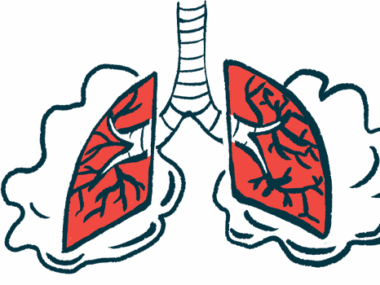RoActemra Not Effective in SSc Patients, Real-world Study Finds
But results support need for future clinical trials, researchers say
Written by |

In a real-world study, the systemic sclerosis (SSc) medication RoActemra (tocilizumab) failed to significantly lessen skin and lung scarring compared with standard of care treatment.
RoActemra, an approved immunosuppressant therapy for systemic sclerosis-associated interstitial lung disease (SSc-ILD), showed no statistically significant differences in efficacy in treating patients in this large European study, the data show.
However, a trend for potential effectiveness was seen, according to researchers, who said the results support the need for future clinical trials with a broader SSc population.
“A remarkable finding of this study was the consistent, although not significant, point estimates in favour of [RoActemra] across all predefined primary and secondary endpoints,” the team wrote.
The study, “Effectiveness and safety of tocilizumab in patients with systemic sclerosis: a propensity score matched controlled observational study of the EUSTAR cohort,” was published in the journal RMD Open.
Investigating RoActemra in real life
Systemic sclerosis, or scleroderma, occurs when the immune system wrongfully targets the skin and other organs. Interstitial lung disease, or ILD, which can occur in nearly 80% of people with scleroderma, is caused by the buildup of scar tissue and inflammation in the lungs, seriously affecting patients’ ability to breathe.
RoActemra, known as Actemra in the U.S., is an immunosuppressant treatment sold by Roche. Its U.S. approval for SSc-ILD was supported by evidence from two clinical trials: the faSScinate Phase 2/3 (NCT01532869) study and the focuSSced Phase 3 trial (NCT02453256).
In both trials, patients treated with RoActemra showed a smaller decline in mean forced vital capacity (FVC) — a lung function measure that assesses how much air is exhaled after a deep breath — compared with those given a placebo.
A tendency to lessen skin fibrosis (scarring) — the trials’ main goal — also was seen with RoActemra versus the placebo. However, the differences were not statistically significant. And moreover, the trials had primarily recruited patients with diffuse SSc.
Researchers had noted that evidence of the therapy’s safety and effectiveness in a real-world setting with a broader population of SSc patients was lacking.
“Data from large ‘real-life’ registries could better determine the effects of [RoActemra] on a more heterogeneous … population,” they wrote.
To that end, a team led by scientists at University Hospital Zurich, in Switzerland, conducted an analysis — supported by Roche — of data from SSc patients treated with RoActemra and followed at 25 centers registered in the European Scleroderma Trials and Research (EUSTAR) database. SSc patients registered in the EUSTAR database but receiving standard of care treatment (not RoActemra) served as controls.
The primary outcome measures were the changes after 12 months in the modified Rodnan Skin Score (mRSS), a standard measure of skin thickness, and FVC, compared between both groups.
Secondary measures included the percentage of patients showing progressive skin and lung fibrosis, as well as the percentage of those with signs of regression in both parameters.
Progressive skin fibrosis was defined by an increase in mRSS of five points and 25%, and lung fibrosis by a decrease in either FVC alone of 10% or more, or a decrease of at least 5% in FVC along with a reduction of 15% or more in the diffusing capacity carbon monoxide (the ability of the lungs to transfer oxygen from the airways to red blood cells). The presence of ILD was identified using either X-rays or high-resolution computed tomography.
Only patients with at least three RoActemra administrations and a follow-up of 9–15 months were included in efficacy analyses.
Results fail to meet statistical significance
In total, data were included from 93 patients who received RoActemra and 3,180 on standard of care treatment. The patients taking RoActemra had a mean age of 50.9 and 78.5% were women.
RoActemra was administered intravenously (into-the-vein) in 65 patients (69.9%), and under-the-skin (subcutaneously) in 13 patients (14.0%). No information was available for 15 patients (16.1%).
Results at follow-up showed that mRSS was lower with RoActemra than in the control group (mean 11.2 vs. 12.2 points), a different that was not statistically significant.
Mean percent predicted FVC was higher with RoActemra — indicative of better lung function — compared with controls (88.7% vs 87.2%), but again the difference did not reach statistical significance.
Likewise, the percentage of patients with progressive lung or skin fibrosis was not significantly different between those treated with RoActemra compared with controls.
Safety analysis included data from 109 RoActemra-treated patients at the study’s start, and then at three, six and 12 months of follow-up. A total of 90 adverse events were registered, and 17 were deemed serious. One death was reported and eight events — which included allergic reaction, renal crisis, and acute heart failure — resulted in discontinuation of RoActemra treatment.
The most common adverse events included low numbers of white blood cells and of platelets. A total of 25 infections were registered.
Overall, safety results confirmed previous data without new signals, according to the team.
“We could not show significant effectiveness of [RoActemra] for skin and lung fibrosis across all predefined primary and secondary endpoints,” the researchers wrote, adding, however, that trends favor the therapy’s effectiveness “in a broader SSc population.”
This hypothesis needs to be confirmed in clinical trials, the team added.






